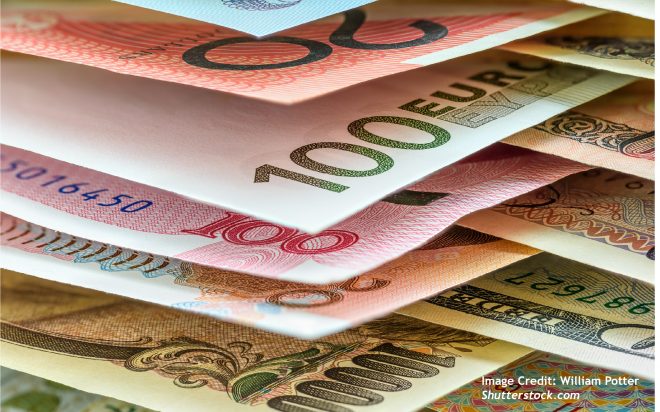Japan’s Response to IMF’s Special Drawing Rights in the COVID-19 Pandemic

On August 2, 2021, the Board of Governors of the International Monetary Fund (IMF) approved a general allocation of Special Drawing Rights (SDRs) as international reserve assets equivalent to US$650 billion to boost global economic liquidity affected by the COVID-19 pandemic. The new SDR allocation became effective on August 23, 2021. IMF Managing Director Kristalina Georgieva stated that “This is a historic decision – the largest SDR allocation in the history of the IMF and a shot in the arm for the global economy at a time of unprecedented crisis… It will particularly help our most vulnerable countries struggling to cope with the impact of the COVID-19 crisis.”
Special Drawing Rights as “Helicopter Money” by the IMF?
The SDR system was created in 1969 as a supplementary international reserve asset in the Bretton Woods fixed exchange rate system. The IMF decided to create and allocate SDRs as a supplemental reserve asset because the credibility of the U.S. dollar was undermined by the United States’ continuing trade deficit. Even after the collapse of the Bretton Woods system in 1973, SDRs have played a role as a global reserve asset – often referred to as “helicopter money,” a term originally coined by U.S. economist Milton Friedman. Moreover, it has been considered that the helicopter money is not necessarily distributed to low-income countries that need SDRs the most, as SDR allocation for IMF member countries is determined by their investment amount.
IMF’s Special Drawing Rights and Suffering Children in Afghanistan
As a matter of fact, the IMF has ruled out Afghanistan from the list of the general allocation of the SDRs because of an approval issue for the new Taliban administration. Nevertheless, the economic situation in Afghanistan has been deteriorating, and it was reported on November 9, 2021, that at least 25 children in the Indira Gandhi Children’s Hospital in Kabul passed away due to hunger and malnutrition. According to the World Food Programme, as many as 45 million people in 43 countries are in danger of famine, and reportedly, the case of Afghanistan is the worst among them. The case of Afghanistan indicates that proper SDR allocation for the sake of vulnerable people is not an easy decision in certain political situations.
Special Drawing Rights to Pay Back Debts to China’s Belt and Road Initiative?
The Chinese yuan, or Renminbi (RMB), was officially integrated into the SDR basket with the U.S. dollar, Euro, Pound sterling, and Japanese yen in 2016. It signifies that SDRs could be utilized within the framework of the Asian Infrastructure Investment Bank (AIIB) and the Silk Road Fund, operated in support of China’s Belt and Road Initiative (BRI). IMF member states can utilize SDR not only for poverty reduction or medical and healthcare system improvements but also for multiple other purposes. For this reason, Shunso Tsukada, a visiting professor at Ritsumeikan Asia Pacific University who used to work for the World Bank, pointed out that the new SDR allocation could be utilized to pay debts stemming from China’s BRI project. Likewise, former Japanese Finance Minister Taro Aso warned that “There would be no point to it if SDR expansion is used for paying back debts to China.”
This year’s historic SDR allocation should therefore be used for bolstering measures against the coronavirus pandemic. An analysis by Oxford Business Group has estimated that the new SDR allocation would double Zambia’s international reserves and increase reserves by more than ten percent in emerging markets, such as Argentina, Ecuador, Ghana, Kenya, and Sri Lanka. Therefore, it is necessary for G20 countries, including Japan, that account for more than 80 percent of global gross domestic product (GDP), to redistribute the SDRs to countries in need and those suffering from poverty and malnutrition due to the pandemic.
Japan Should Redistribute Special Drawing Rights for Vulnerable Countries
In the 44th meeting of the International Monetary and Financial Committee held in Washington D.C. on October 14, 2021, newly appointed Japanese Finance Minister Shunichi Suzuki expressed an official statement and welcomed the new SDR allocation of US$ 650 billion. He stated that the Japanese government would “contribute to SDR channeling that utilizes the newly allocated SDRs to support vulnerable countries, particularly low-income ones.” In concrete terms, the government would continue to make financial contributions to the Poverty Reduction and Growth Trust (PRGT) and support the IMF’s proposal to create the Resilience and Sustainability Trust (RST) to address medium-term and long-term structural challenges, such as climate change and pandemic preparedness.
It is also possible for Japan as well as other G20 member countries to distribute the allocated SDRs through channels of multilateral development banks (MDBs), such as the World Bank and the Asia Development Bank. The SDR allocation is not a cure-all solution for the global economy damaged by the coronavirus pandemic. Still, the balanced reallocation of the SDRs based on the three options above would be able to mitigate the danger for vulnerable people at risk of famine and malnutrition in the middle of the COVID-19 pandemic. In particular, children in Afghanistan are innocent and should not have to suffer from famine and malnutrition. Japan’s postwar economic recovery and rapid growth profoundly owed to the financial assistance by the World Bank and especially the International Bank for Reconstruction and Development (IBRD), which financed 31 projects in postwar Japan. In this sense, Japan is responsible for making further financial contributions to the post-pandemic recovery of the global economy and suffering people in the world.